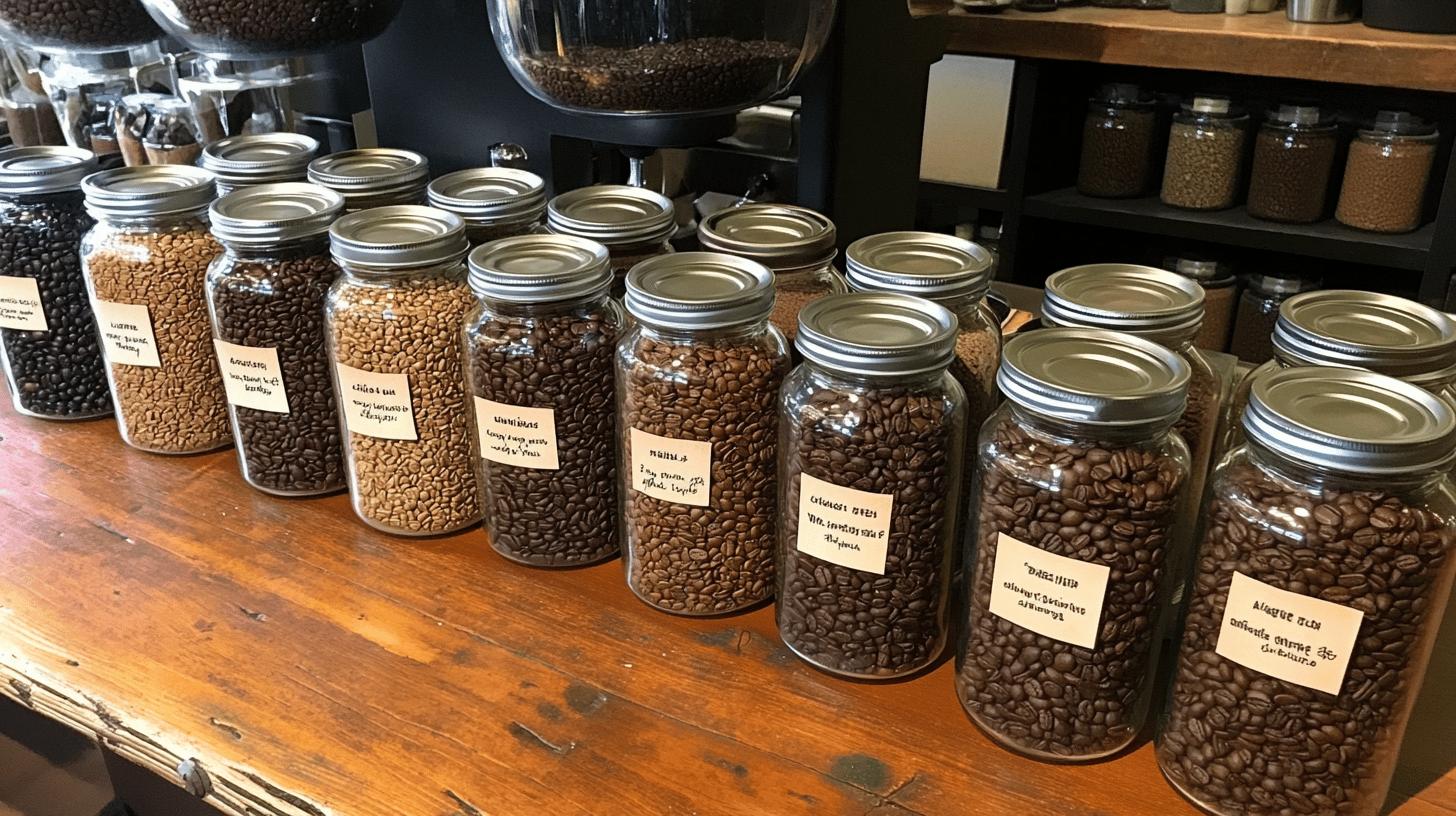Does the type of coffee bean make a significant difference in your cup’s flavor? Absolutely! In fact, understanding the array of coffee bean varieties is crucial for every coffee enthusiast aiming to elevate their brewing game. In our comprehensive “Coffee Bean Varieties Review 2023,” we delve into the fascinating world of Arabica, Robusta, Liberica, and Excelsa beans—each with its unique flavor profile and origin. Whether you crave the smooth richness of Arabica or the robust intensity of Robusta, this review will guide you through the essentials to perfect your next brew. Dive in to discover which variety promises your ideal coffee experience.
Understanding Coffee Bean Varieties
Coffee beans, the seeds of the coffee plant’s fruit known as coffee cherries, come in four main varieties: Arabica, Robusta, Liberica, and Excelsa. Arabica and Robusta are the most commonly known and consumed, while Liberica and Excelsa have more niche followings. Each variety offers distinct flavor profiles and characteristics, making them unique in their own right.
Arabica beans, which account for approximately 60% of global coffee consumption, are renowned for their smooth, rich flavor and complex acidity. They are typically grown in high altitudes with ample rainfall, primarily in regions such as Brazil, Colombia, and Ethiopia. Robusta beans, on the other hand, are primarily grown in Africa and Indonesia. These beans are known for their stronger, more bitter taste and higher caffeine content, making them a popular choice for espresso and instant coffee.
- Arabica: Smooth, rich flavor, complex acidity, predominant in high-altitude regions.
- Robusta: Strong, bitter taste, high caffeine content, grown mainly in Africa and Indonesia.
- Liberica: Floral scent, robust, smoky flavor, less common but distinct.
- Excelsa: Unique flavor combining dark roast characteristics with light roast acidity.
Liberica beans stand out for their floral scent and robust, smoky flavor. They are less common but highly prized by those who appreciate their unique taste. Excelsa beans, often confused with Liberica, offer a unique flavor profile that combines characteristics of both dark roast and light roast coffees, providing a tart, fruity taste. These beans are primarily cultivated in Southeast Asia and are cherished for their distinctiveness in the coffee world.
Detailed Profiles of Popular Coffee Bean Varieties
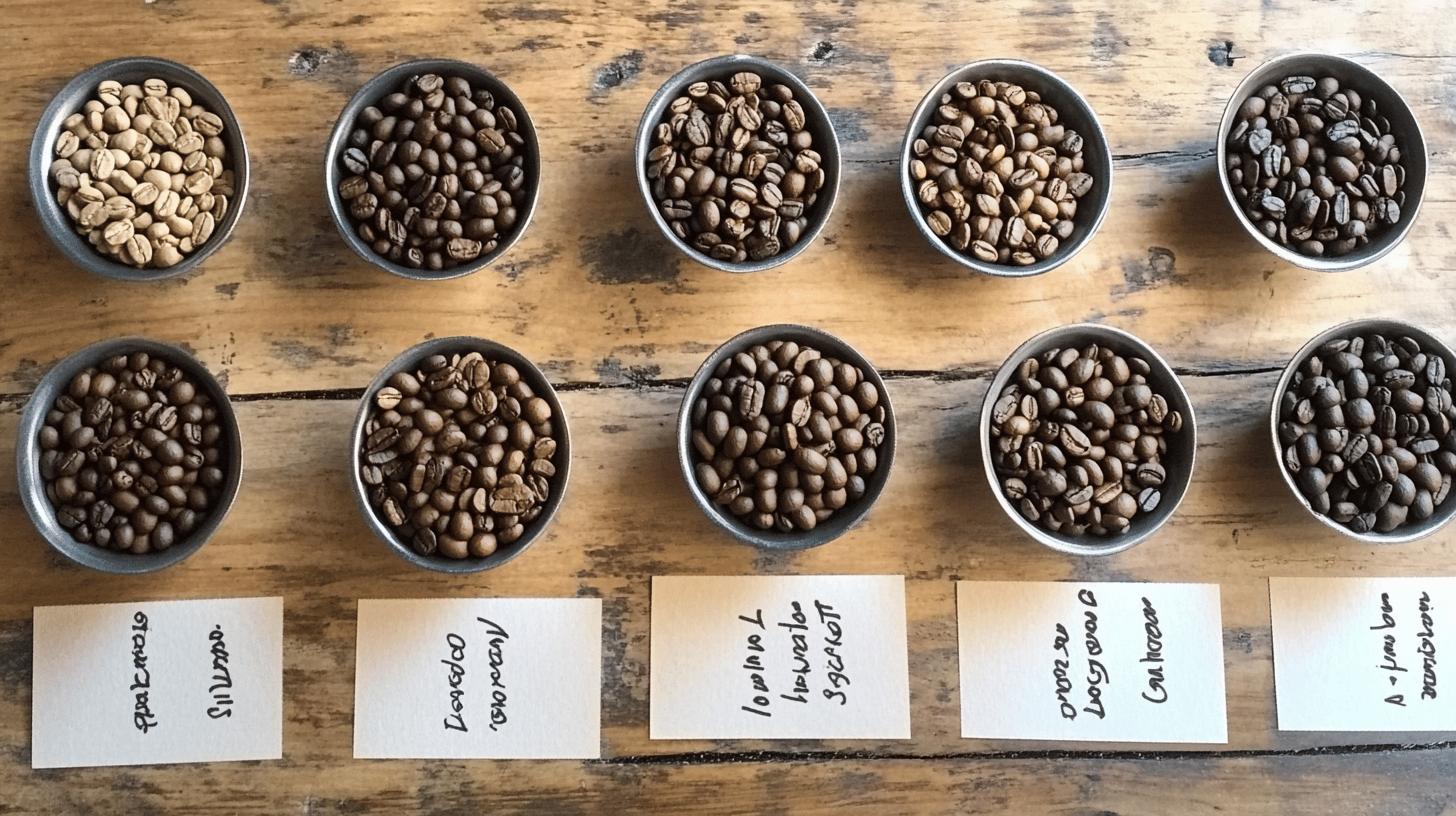
Arabica beans are the most popular coffee bean variety, accounting for approximately 60-70% of global coffee production. These beans are grown at high altitudes with ample rainfall, predominantly in regions such as Brazil, Colombia, and Ethiopia. Known for their less bitter taste and complex acidity, Arabica beans offer a smooth and rich flavor profile. Their delicate characteristics make them a preferred choice for drip coffee and pour-over brewing methods.
Robusta beans, in contrast, are known for their strong, often harsh flavor and high caffeine content. These beans are easier to cultivate and cheaper to produce, making them a common choice for instant coffee and espresso blends. Grown mainly in Africa and Indonesia, Robusta beans thrive in lower altitudes and warmer climates. Their bitter taste and robust profile provide a distinct punch, often appreciated in stronger coffee brews.
| Coffee Bean Variety | Characteristics |
|---|---|
| Arabica | Smooth, rich flavor, complex acidity, grown in high-altitude regions |
| Robusta | Strong, bitter taste, high caffeine content, grown mainly in Africa and Indonesia |
| Liberica | Floral scent, robust, smoky flavor, less common but distinct |
| Excelsa | Tart, fruity flavor, characteristics of both light and dark roast coffees |
Liberica beans stand out for their unique aroma, likened to fruit and flowers, with a somewhat “woody” taste. These beans are less common but highly prized for their robust and smoky flavor. Liberica beans are primarily grown in Southeast Asia, including countries like Indonesia, Malaysia, and the Philippines. Their distinct profile makes them a favorite among those seeking a different and unusual coffee experience.
Excelsa beans, often confused with Liberica, offer a unique flavor profile that combines characteristics of both light and dark roast coffees. Known for their tart, fruity taste, these beans are primarily cultivated in Southeast Asia. Excelsa beans display a complex flavor that can provide a refreshing twist to traditional coffee blends, making them a cherished choice for adventurous coffee drinkers.
Exploring Arabica Coffee Bean Varieties
Arabica coffee beans account for 60-70% of global coffee production, making them the most popular and widely cultivated coffee bean variety. Grown primarily in high-altitude regions with ample rainfall, Arabica beans are favored for their smooth, rich flavor and complex acidity. Major producers of Arabica beans include countries like Brazil, Colombia, and Ethiopia, where the unique growing conditions contribute to the beans’ distinct characteristics.
Ethiopian Yirgacheffe beans are celebrated for their floral and citrus notes, offering a delicate and aromatic coffee experience. Brazilian Arabica beans are known for their chocolate and nutty flavors, which provide a rich and smooth profile that is less acidic than other varieties. Colombian beans, on the other hand, are prized for their balanced acidity and fruity undertones, making them a versatile choice for a wide range of coffee preparations.
- Typica: Known for its clean, sweet flavor and well-balanced acidity, Typica is one of the oldest and most widespread Arabica varieties.
- Bourbon: Offers a complex, sweet flavor with hints of chocolate and fruit, often grown in high-altitude regions.
- Caturra: A mutation of Bourbon, Caturra beans are noted for their bright acidity and citrusy flavors.
- Gesha: Renowned for its exceptional floral and jasmine notes, Gesha beans are often considered some of the best in the world.
- SL28: Popular in Africa, particularly Kenya, SL28 beans have a rich, fruity flavor with excellent acidity and body.
Growing conditions significantly influence the flavor of Arabica beans. Factors such as altitude, soil health, and climate play crucial roles in determining the beans’ taste profile. Higher altitudes generally produce beans with higher acidity and more complex flavors due to the slower maturation process. Soil composition, including mineral content and organic matter, affects the nutrient uptake and overall health of the coffee plants. Climate conditions, such as temperature and rainfall, also impact the development of flavor compounds within the beans. These variables combine to create the diverse and rich flavor profiles that Arabica coffee beans are known for.
The Role of Coffee Bean Varieties in Flavor Profiles
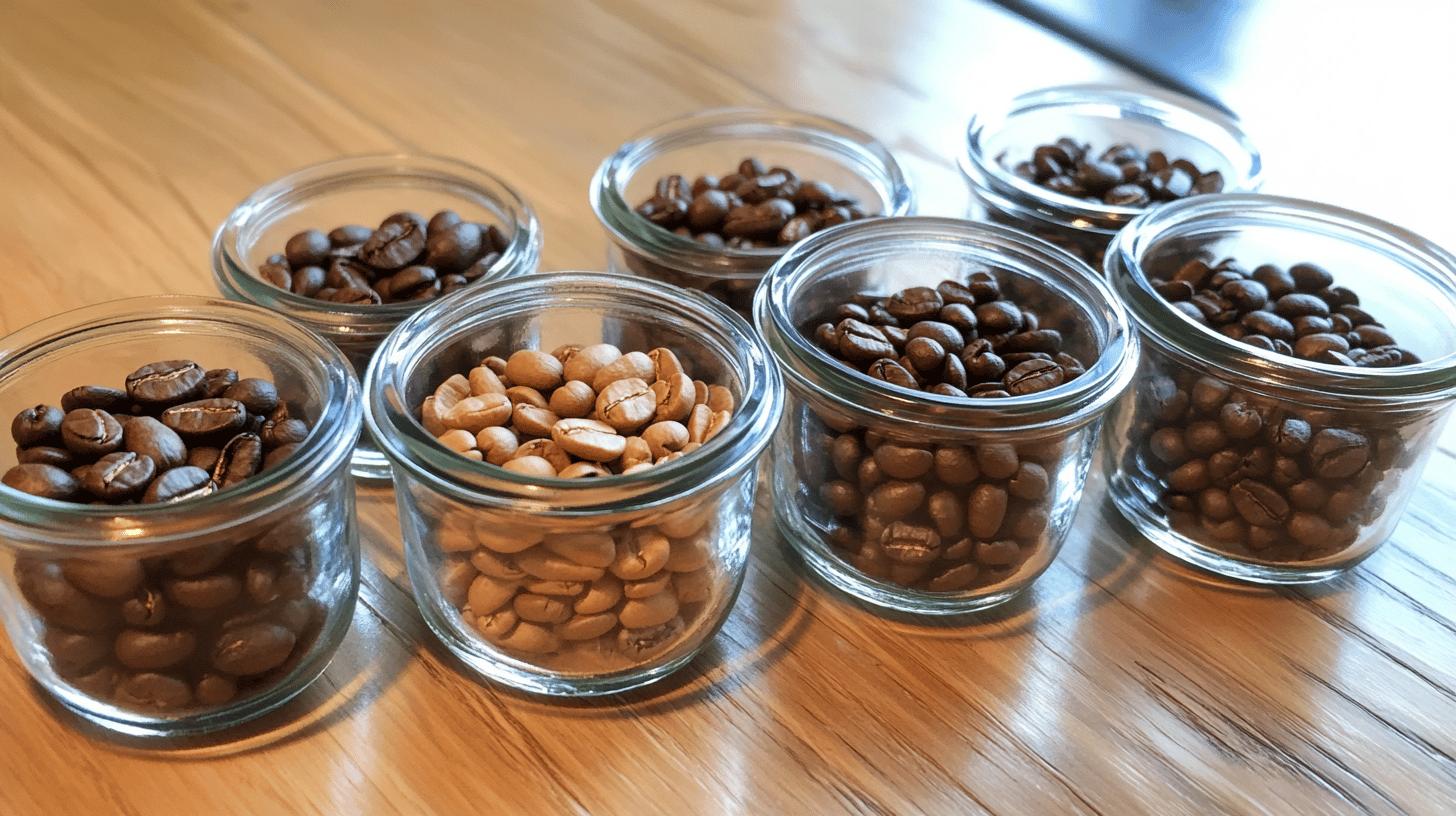
Coffee bean varieties significantly influence the flavor and aroma of the final brew. The type of bean determines the overall taste, acidity, and body of the coffee. For instance, Arabica beans are celebrated for their complex acidity and delicate flavors, making them a favorite among coffee enthusiasts who prefer a smoother cup. In contrast, Robusta beans are known for their strong, bitter taste and higher caffeine content, often used in espresso blends for an added kick. Liberica and Excelsa beans offer more unique flavor profiles, with Liberica providing a woody taste and Excelsa contributing tart, fruity notes.
| Coffee Bean Variety | Flavor Profile |
|---|---|
| Arabica | Complex acidity, delicate flavors |
| Robusta | Strong, bitter taste, high caffeine content |
| Liberica | Woody taste, floral aroma |
| Excelsa | Tart, fruity notes |
Arabica beans, grown in high-altitude regions, are known for their intricate flavor profiles and complex acidity. These beans often exhibit floral and fruity aroma profiles, contributing to their popularity in specialty coffee markets. The acidity levels in Arabica beans are generally higher, offering a bright and lively taste that can vary from sweet to tangy, depending on the specific sub-variety and growing conditions.
Robusta beans, on the other hand, have a more robust and bitter flavor, making them ideal for strong coffee blends. They possess higher caffeine levels, which not only contribute to their bitter taste but also make them more resistant to pests. The aroma profile of Robusta beans is often described as earthy or nutty, and they have a fuller body compared to Arabica beans. This makes them a common choice for espresso and instant coffee.
Liberica and Excelsa beans are less common but provide unique flavor experiences. Liberica beans have a distinctive woody taste with a floral aroma, offering a bold and unconventional coffee experience. Excelsa beans, often confused with Liberica, have a tart, fruity flavor profile that combines characteristics of both light and dark roast coffees. These beans are primarily grown in Southeast Asia and are prized for their ability to add complexity and depth to coffee blends.
Coffee Bean Varieties and Their Growing Regions
Growing regions play a crucial role in defining the characteristics and flavor profiles of coffee beans. Factors such as altitude, soil health, and climate in these regions significantly impact the beans’ development and the final taste of the coffee. Each coffee bean variety thrives in specific conditions that enhance its unique attributes, making the origin of the beans an essential aspect of coffee production.
Arabica beans are predominantly grown in regions such as Brazil, Colombia, Ethiopia, and Central America. These areas offer the high altitudes and ample rainfall necessary for cultivating Arabica beans, which are known for their smooth, rich flavor and complex acidity. Brazil is the largest producer of Arabica beans, contributing significantly to the global supply. Colombian Arabica beans are highly regarded for their balanced acidity and fruity undertones, while Ethiopian beans, particularly those from Yirgacheffe, are celebrated for their floral and citrus notes.
- Robusta: Mainly grown in Africa, Indonesia, and Vietnam. These regions provide the warm climates and low-altitude conditions ideal for Robusta beans, which are known for their strong, bitter taste and high caffeine content.
- Liberica: Grown in Indonesia, Malaysia, and the Philippines. These regions offer the tropical climates that Liberica beans require, resulting in their distinctive floral scent and robust, smoky flavor.
- Excelsa: Primarily cultivated in Southeast Asia. The unique growing conditions in this region produce beans with a tart, fruity flavor and characteristics of both light and dark roast coffees.
Altitude significantly influences the flavor profiles of coffee beans. Higher altitudes typically result in slower bean maturation, leading to more complex flavors and higher acidity. Soil health, including the mineral content and organic matter, affects nutrient uptake and plant health, further contributing to the beans’ taste. Climate, encompassing temperature and rainfall patterns, also plays a vital role. Optimal climate conditions ensure the development of desirable flavor compounds within the beans.
In conclusion, the growing regions for coffee bean varieties are integral to their distinct characteristics. Arabica beans thrive in high-altitude regions with ample rainfall, while Robusta beans prefer warmer, low-altitude environments. Liberica and Excelsa beans flourish in tropical climates found in Southeast Asia. Understanding these factors can help coffee enthusiasts appreciate the diverse flavors and profiles that different coffee bean varieties offer.
Coffee Bean Varieties and Brewing Methods
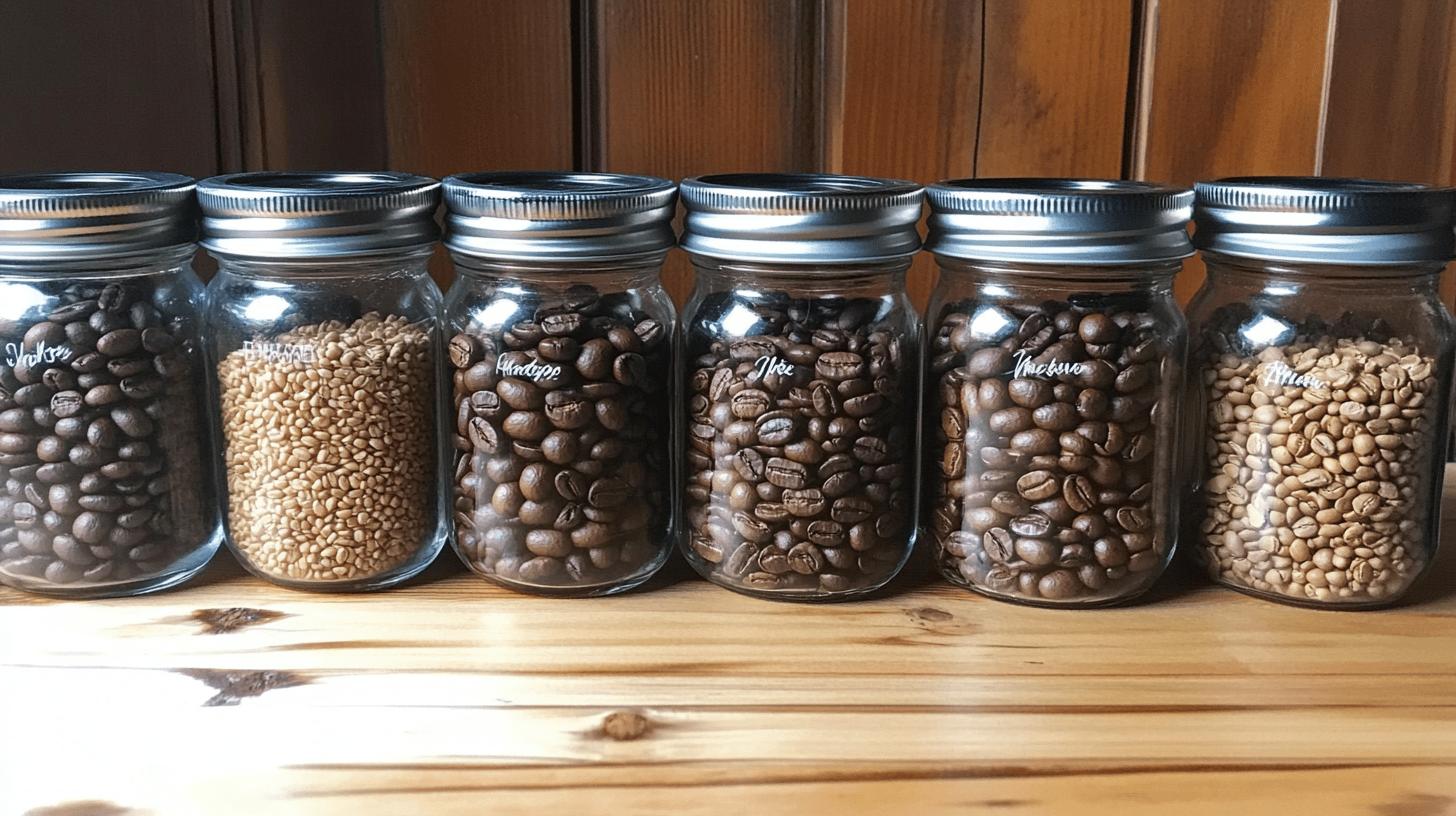
Matching coffee bean varieties to the appropriate brewing methods is essential for extracting the best flavors and aromas. Each variety of coffee bean has unique characteristics that can be either enhanced or diminished depending on the brewing technique used. Understanding which beans work best with specific methods can significantly improve your coffee experience.
| Coffee Bean Variety | Suitable Brewing Methods |
|---|---|
| Arabica | Pour-over, Drip Coffee, French Press |
| Robusta | Espresso, Instant Coffee, Moka Pot |
| Liberica | Espresso, Cold Brew |
| Excelsa | French Press, Cold Brew |
Arabica beans are best suited for pour-over and drip coffee methods, which highlight their delicate flavors and complex acidity. The slow extraction process in pour-over brewing allows for the intricate floral and fruity notes of Arabica beans to shine through. Drip coffee, with its consistent water flow and temperature control, ensures a balanced and smooth cup, making it ideal for showcasing Arabica’s nuanced flavor profile.
Robusta beans, known for their strong, bitter taste and high caffeine content, excel in espresso and instant coffee preparations. The high-pressure extraction of espresso brewing enhances Robusta’s robust flavor and full body, delivering a powerful coffee shot. Instant coffee often uses Robusta beans due to their bold taste and cost-effectiveness. The Moka pot, with its ability to produce a rich and concentrated brew, also complements the intense flavors of Robusta beans.
Liberica and Excelsa beans offer unique flavor profiles that can be best appreciated through specific brewing methods. Liberica beans, with their floral scent and robust, smoky flavor, are well-suited for espresso and cold brew. The concentrated nature of espresso highlights Liberica’s boldness, while cold brew’s slow steeping process brings out its aromatic qualities. Excelsa beans, known for their tart, fruity taste, thrive in French press and cold brew methods. The full-immersion brewing of the French press extracts Excelsa’s complex flavors, while cold brew enhances its refreshing and bright notes.
Specialty and Heirloom Coffee Bean Varieties
Specialty and heirloom coffee beans are highly prized for their unique flavors and limited production. These beans are often cultivated in specific regions with unique growing conditions that contribute to their distinct taste profiles. Heirloom beans, in particular, are traditional varieties passed down through generations, preserving their unique characteristics. Specialty beans are selected for their exceptional quality and are often subject to rigorous grading standards.
Single-origin coffees are sourced from a single geographic location and offer distinct flavor profiles reflective of their terroir. These coffees provide a pure expression of the region’s soil, altitude, and climate conditions. For example, Gesha beans from Ethiopia and Panama are renowned for their exceptional floral and jasmine notes. Jamaican Blue Mountain beans, another famous single-origin variety, are celebrated for their mild flavor and lack of bitterness, making them a favorite among coffee connoisseurs.
- Gesha: Known for its floral and jasmine notes, originating from Ethiopia and Panama.
- Jamaican Blue Mountain: Prized for its mild flavor and lack of bitterness, cultivated in the Blue Mountains of Jamaica.
- Hawaiian Kona: Offers a smooth, rich flavor with a hint of nuttiness, grown on the slopes of Mauna Loa in Hawaii.
These beans are considered gourmet due to their exceptional quality and limited availability. The careful cultivation and processing methods enhance their unique attributes, making them highly sought after in the coffee market. Specialty and heirloom beans often command higher prices, reflecting their superior quality and the labor-intensive practices required to produce them. Their impact on the coffee market is significant, as they set benchmarks for quality and flavor, inspiring both producers and consumers to seek out the best coffee experiences.
How to Choose the Right Coffee Bean Variety
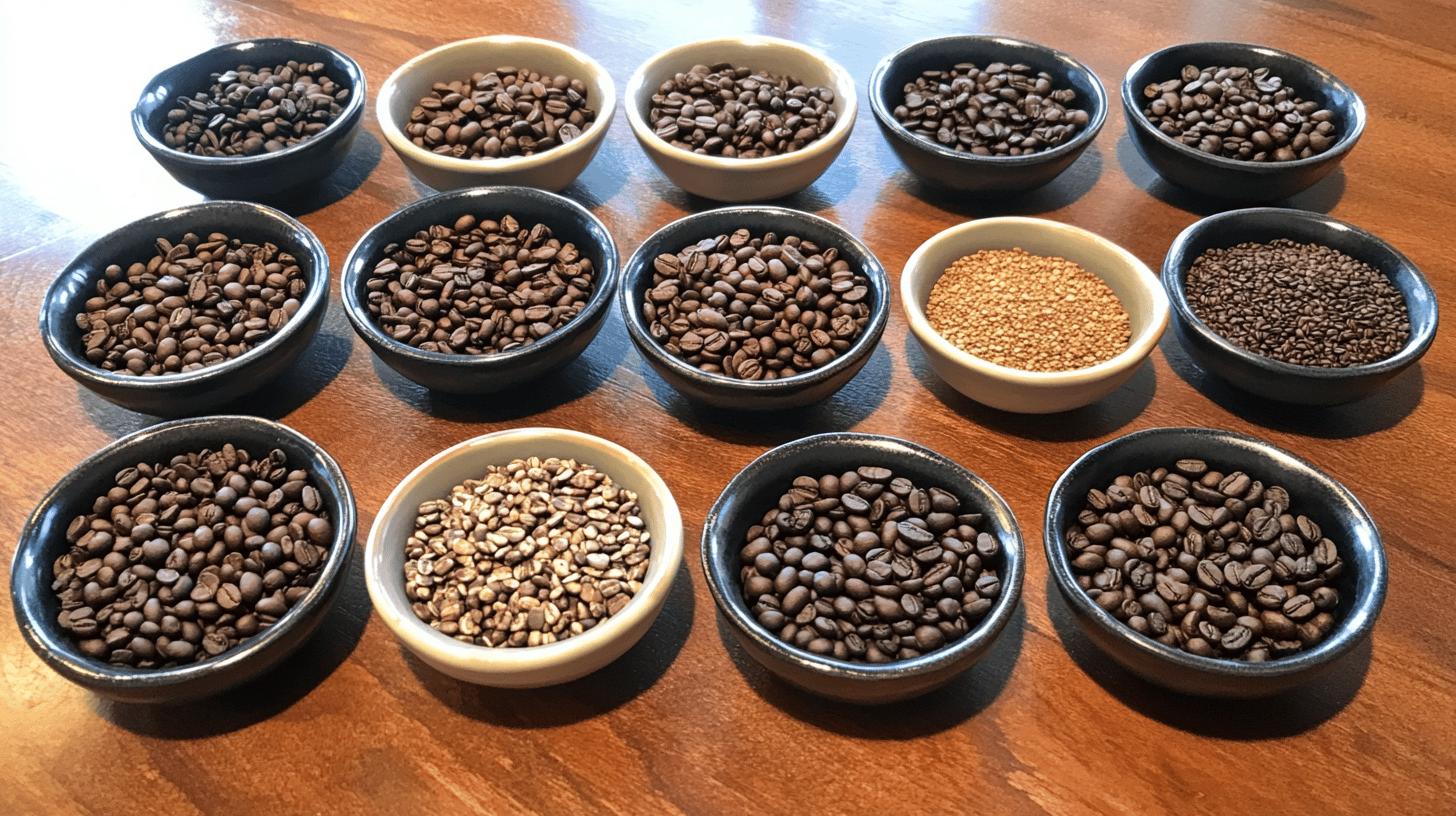
When choosing coffee beans, consider factors such as flavor profile, acidity, and body. Arabica beans are ideal for those who prefer smooth, complex flavors with a balanced acidity. They are often described as having floral, fruity, and sweet notes. Robusta beans, on the other hand, are better suited for those who enjoy strong, bitter coffee with a fuller body and higher caffeine content. The choice of beans will significantly impact the overall taste and enjoyment of your coffee.
- For smooth, complex flavors: Arabica
- For strong, bitter coffee: Robusta
- For unique aromas: Liberica
- For a mix of light and dark roast characteristics: Excelsa
Freshly roasted beans ensure the best flavor and aroma, as coffee begins to lose its freshness shortly after roasting. Look for beans that have been roasted within the past few weeks for the optimal coffee experience. Freshly roasted beans will have a more vibrant and nuanced flavor profile, making your coffee more enjoyable.
Experimenting with different varieties and blends can help you find your preferred taste. Blends can combine the best characteristics of multiple bean types, offering a balanced and complex cup. Trying single-origin beans allows you to experience the unique flavors of specific regions. This experimentation can lead to discovering new favorites and enhancing your overall coffee enjoyment.
Final Words
Diving into the world of coffee bean varieties reveals a rich tapestry of flavors and characteristics. Each variety, from Arabica to Excelsa, offers a unique profile influenced by its growing conditions and region. Understanding these differences enhances appreciation and enjoyment.
Exploring different types can lead to discovering your preferred beans. Whether it’s the smooth richness of Arabica or the robust intensity of Robusta, there’s a perfect bean for every palate.
Embrace the journey of tasting and learning. The diverse coffee bean varieties offer endless opportunities for delightful experiences.
FAQ
What are the four types of coffee beans?
The four main types of coffee beans are Arabica, Robusta, Liberica, and Excelsa. Each type has distinct flavor profiles and growing conditions.
What is the best variety of coffee beans?
The best coffee bean variety depends on personal preferences. Arabica beans are favored for their smooth and rich flavors, while Robusta beans are known for their strong, bitter taste and higher caffeine content.
Is Robusta or Arabica better?
Arabica beans are generally preferred for their sweeter, more complex flavors, while Robusta beans have a stronger, more bitter taste. The choice depends on individual taste preferences.
Which is better, Liberica or Arabica?
Arabica beans are more popular for their smooth, rich flavors and complex acidity. Liberica beans have a unique woody and smoky flavor, suiting those who prefer a distinct taste.
How many types of coffee beans are there in the world?
There are four main types of coffee beans: Arabica, Robusta, Liberica, and Excelsa. However, within these categories, there are numerous sub-varieties with unique characteristics.
What are the 12 types of coffee?
The term ’12 types of coffee’ often refers to different brewing methods or coffee drinks, such as espresso, latte, cappuccino, etc. For coffee beans, the main types are Arabica, Robusta, Liberica, and Excelsa.
What are the characteristics of Arabica and Robusta beans?
Arabica beans are known for their smooth, rich flavors and complex acidity. Robusta beans have a more bitter taste, higher caffeine content, and are commonly used in instant coffee.
Where are the primary growing regions for Arabica beans?
Arabica beans are primarily grown in Brazil, Colombia, Ethiopia, and Central America. These regions offer the high altitudes and ample rainfall ideal for growing Arabica beans.
What are some notable heirloom coffee bean varieties?
Notable heirloom coffee bean varieties include Gesha from Ethiopia and Panama, known for their floral and jasmine notes, and Jamaican Blue Mountain beans, prized for their mild flavor and lack of bitterness.
How can I choose the right coffee bean variety?
Consider factors such as flavor profile, acidity, and body. Arabica beans are ideal for smooth, complex flavors, while Robusta beans suit those who prefer strong, bitter coffee. Freshly roasted beans ensure the best taste.
How do different coffee bean varieties influence flavor profiles?
Coffee bean varieties significantly influence the flavor and aroma of the final brew. Arabica beans are known for their complex acidity, Robusta for their strong, bitter taste, Liberica for their woody flavor, and Excelsa for tart, fruity notes.

